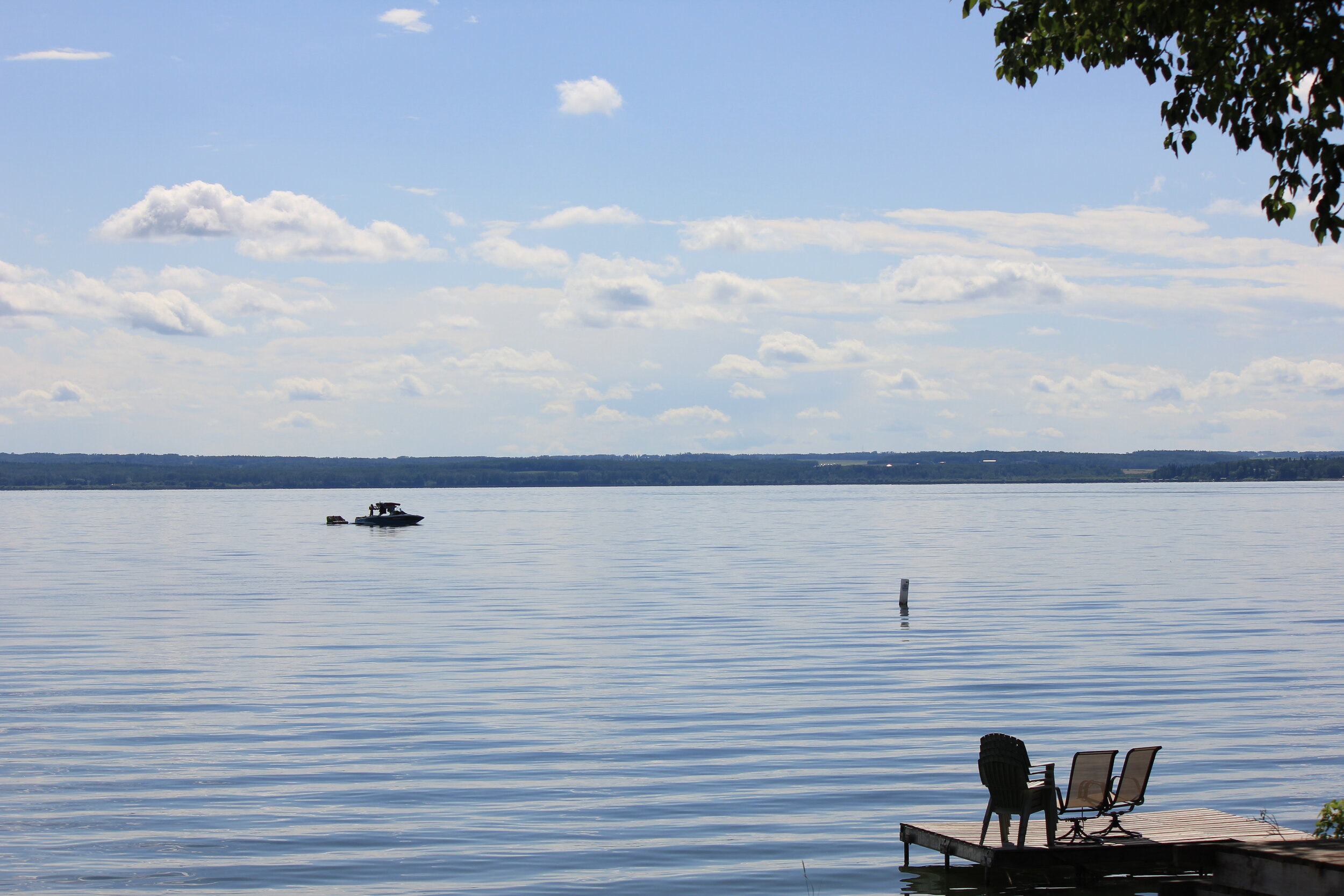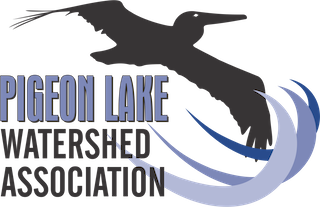
Minimizing Your Footprint
Naturalize Your Lot: A guide to Lake-Friendly Landscaping
Be Lake Informed
Obtaining Permits
Minimizing Your Footprint
Shoreline Restoration
Planting for the Lake
Preventing Noxious Weeds
Maintaining Lake Lawns
Reduce your impact on the lake - Naturalizing your lot.
A natural landscape design is good for the lake and also benefits the home owner. Naturalization can reduce the risk of flooding; stabilize and reduce erosion on slopes and the shoreline; reduce regular maintenance; and reduce the frequency of Algal blooms. To get started, this section highlights key elements of beneficial watershed management practices. Once you have the basics, use PLWA Self-Guided Property Assessment Tool to help you evaluate your lot. Be sure check out the other resources listed below including the Alberta Clean Runoff Action Guide.
Ways to Minimize Your Footprint
Lot Grading and Drainage
Hard surfaces including building and driveways can contribute to runoff. By implementing proper grading and drainage, you can take advantage of runoff by turning it into a water source. Further reading: Alberta Clean Runoff Action Guide: Landscaping
Retaining Rainwater
Runoff from buildings can be directed and retained through downspouts or collected in a rain barrel and used to water flowers, gardens and natural areas. This will also helps slow the runoff from directly entering the lake. Further reading: Alberta Clean Runoff Action Guide: Rainwater Retention
Driveway
Driveways and parking spaces can funnel pollutants from stormwater into the lake, ditches, or nearby wetlands. Limit the surface area of driveways and use alternate surfaces such permeable pavers, turf stones, and washed rock. Further reading: Alberta Clean Runoff Action Guide: Permeable Pavements
Parking Areas
Planning a concrete pad for an RV or guest parking? Use open lattice or a Hollywood driveway instead to reduce runoff, urban heat effect, and winter maintenance. Further reading: Alberta Clean Runoff Action Guide: Permeable Pavements
Yard, Recreation Areas, and Footpaths
Next to hard surfaces, turf is the least absorbent surface on properties. Examine where it is used and where it isn’t. Then Transform unused lawn areas into a beautiful natural space by creating a no-mow zone.
Layers of Vegetation
Ensure there is a mix of vegetation at various heights. Surround large trees with shrubs and ground cover. This will improve the capacity of the soil, enhance habitat to promote biodiversity and support clean runoff. Further reading: Living on the Waterfront: The Alberta Guide for Shoreline Living
Buffer Strips
Design grading and drainage to run into a planting bed next to a driveway this will act as a natural buffer strip to slow and filter runoff from entering the lake.
Pollinator Garden and Native Plants
Planting a diversity of flowering plants will support a wide variety of pollinators. Consider plants that bloom from early spring to late fall, with flowers of different shapes and colours. Incorporate bare soil as well as plant mulch and an insect water dish. This will ensure pollinators have food, water and shelter. Further reading: Best native flowers and grasses for different areas and also for attracting bees and butterflies to your garden
Shorelines & Slopes - Erosion Prevention
Lakefront lot owners have a significant opportunity to increase the overall quality of Pigeon Lake by enhancing their shoreline using a soft armoring approach. “Plants and trees provide the best natural protection for the long run and by planting them early or leaving already existing ones alone you avoid potential costly and unfixable property loss.” Additional techniques for preventing erosion include adding a bush mattress, vegetated rip rap, and live staking.
Further reading:
Shorelines Restoration
Growing Restoration
Source: Shoreline Stabilization Techniques, Alberta Environment and Parks
Pro Tips
Respect the Soil
Top soil should be 30 - 60 cm deep under turf. This will reduce runoff and support a drought-tolerant lawn as the grass will have more room to grow. This also encourages a healthy soil-food web that naturally provides nutrients for the lawn. Further reading: Soil Food Web
Turf Alternatives
If you like some lawn, replace the short-rooted, water-dependent lawn for the Pigeon Lake Native Seed Mix or white clover. Both are draught resistant and have substantial root systems to help filter excess nutrients in runoff and require less mowing. Further reading: Alternate Lawns
What to Avoid
✘ Paving Driveways
With hard surfaces, rainfall is not given a way to soak in. The runoff contributes excess nutrients in the lake and is contributing to more frequent algal blooms.
✘ Chemically Treated Materials
Eliminate chemically treated surfaces including pressure treated lumber for edging. Don’t forget about winter. Ensure solutions keep snow piles away from the shoreline and ditches and switch to lake-friendly road treatment.
✘ Improper Lot Grading
Without checking where water naturally flows on your property, runoff can cause flooding on the property and excess nutrient loading in the lake.
✘ More Lawn than Needed
Next to hard surfaces, turf is the least absorbent surface on properties. Examine where it is used and where it isn’t. Then Transform unused lawn areas into a beautiful natural space.
Learn More
PLWA Self-Guided Property Assessment Tool
An average suburban lot area is 50% hard surfaces. It generates 18 times more runoff than the natural area it replaced, and carries proportionally more nutrients and pollutants into our water bodies.
- Alberta Clean Runoff Action Guide
References
Ribbon Driveway photograph by Matthew Williams, taken from Gardenista Hardscaping 101: Ribbon Driveways by Jeanne Rostaing https://www.gardenista.com/posts/hardscaping-101-ribbon-driveways/
Yard Path photograph by Audrey Hillman, taken from More Sustainable (and Beautiful) Alternatives to a Grass Lawn by Mary Talbot https://www.nrdc.org/stories/more-sustainable-and-beautiful-alternatives-grass-lawn










